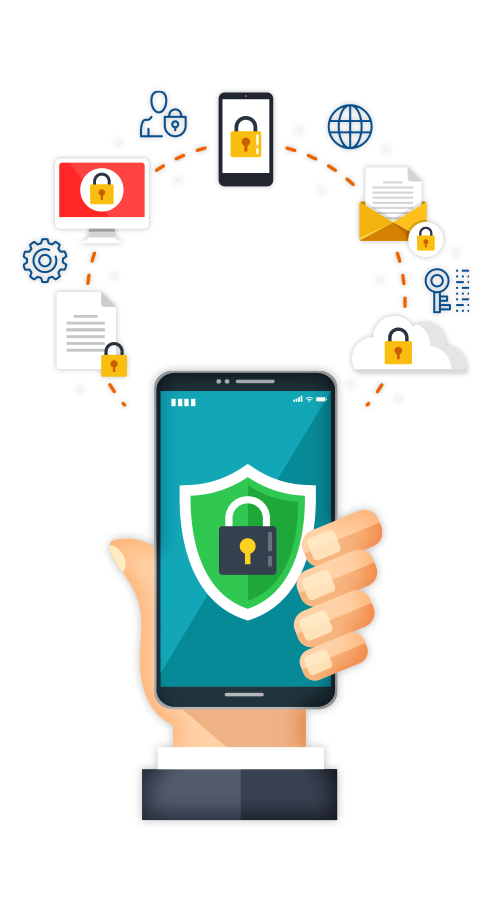Work remote, work secure
With more people working remotely, it is important to stay vigilant and follow best practices to keep you and your organization cyber safe.
Working securely from home
Here are some of the best practices for keeping your devices, and networks cyber safe while working from home:
In addition to securing your home network, there are some important cyber hygiene practices you should utilize to work securely from home.
Mobile device security
Mobile devices, such as laptops, smartphones, tablets, portable hard drives and USB keys contain sensitive or personal information. These devices are portable and convenient to use. However, their portability also makes them a security risk.

Here are some things you can do to use your mobile devices securely:
Protect your devices from loss or theft
Keep mobile devices secure. Do not leave them unattended in a vehicle.
Don’t store or transport high sensitivity information on mobile devices. If you must store or transport High Sensitivity information, ensure you have approval to do so, and the appropriate devices and security.
Protect your devices from malicious use
Avoid charging your phone on computers or devices that you do not control, such as hotel docking stations. Malicious software could be transferred when your device is connected.
Never connect an unknown storage device to your tablet or laptop. Any storage device that connects to a USB port could contain malware.
Use strong passwords
Protect your devices with strong passwords.
Set your device to lock automatically
A locked smartphone is less immediately useful to someone looking to access information.
Set permissions
Increase your security by limiting what information your smartphone collects and what it can do. Limit features that share your location and be aware of authorizing apps to access contacts, photos and files.
Use multi-factor authentication
Multi-factor authentication (MFA) is an enhanced form of security that requires two or more authentication factors to log into your account. A mobile phone with an authenticator app can be useful as “something you have” for providing a second authentication factor.
Use encryption
Use encryption when emailing or storing any sensitive information.
Get routine updates
Connect your devices to your work network regularly to ensure patches and updates are installed. Update your smartphone operating system and any applications (apps) when prompted.
Smart devices
A smart device is any devices that contains technology for the purpose of connecting to and exchanging data with other devices and systems over the internet. These devices range from ordinary household objects to sophisticated industrial tools.
While we may easily recognize that computers, smartphones, and tablets are smart devices, there is a proliferation of smart devices in the market. Personal fitness trackers, TVs, thermostats, cars, coffee makers, door locks, toys, and light bulbs can all be smart devices.
Virtual meetings
Many of us regularly attend online meetings from a personal device, using platforms like Teams or Zoom. Take precautions to mitigate the risk of a breach from these virtual meetings.

- Enable the lobby or waiting room feature
- Do not allow the meeting to begin until the host joins
- Enable notifications for when an attendee joins, so the host is notified if an unknown or uninvited guest joins the meeting
- Monitor attendees to identify any generic attendees
- Do not record the meeting unless it is necessary
- Disable features you do not need, such as chat or file sharing
- Before sharing your screen, close documents to ensure that sensitive information is not shared accidentally
- Use only approved virtual meeting services
- Where possible, only conduct virtual meetings on work-issued devices
